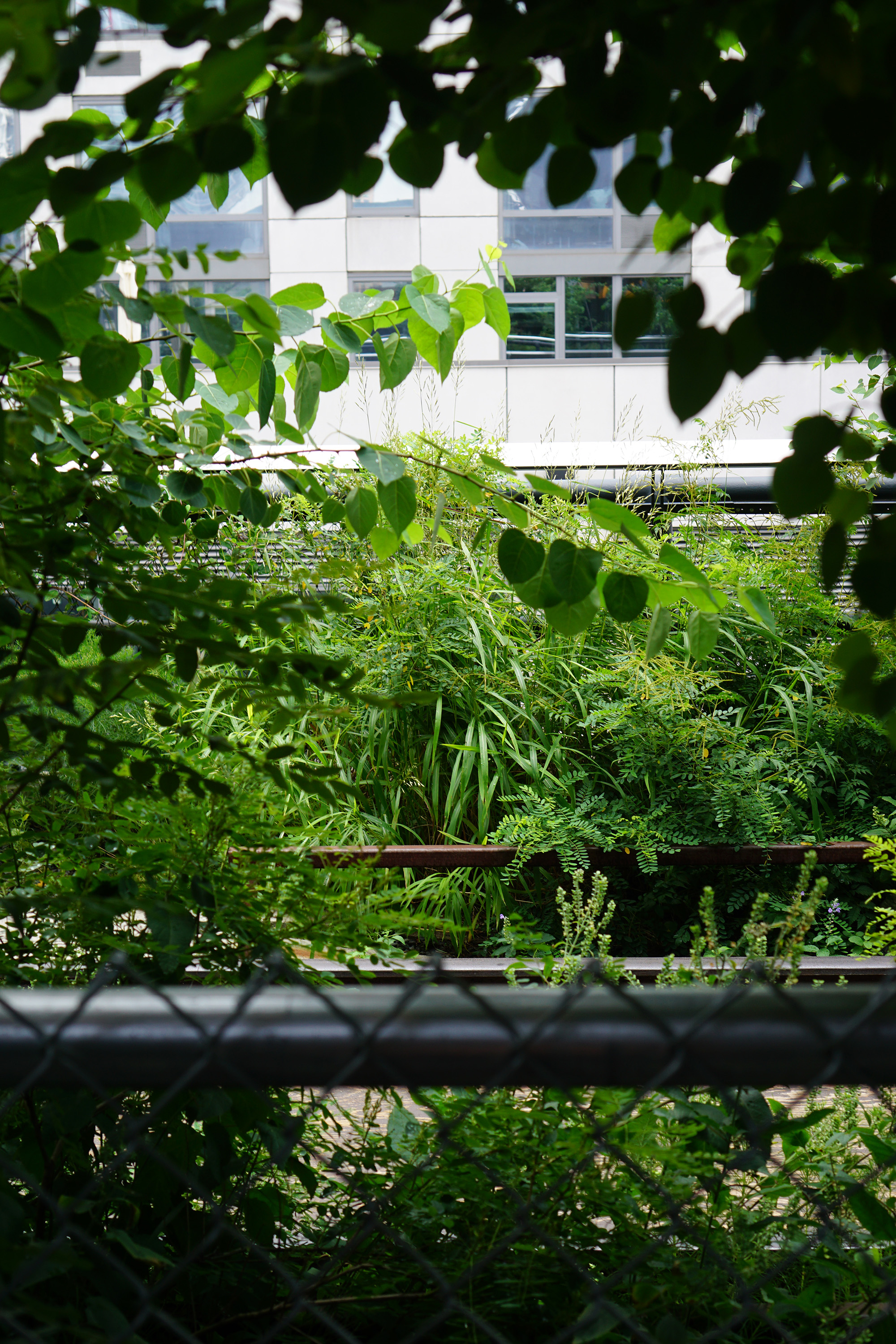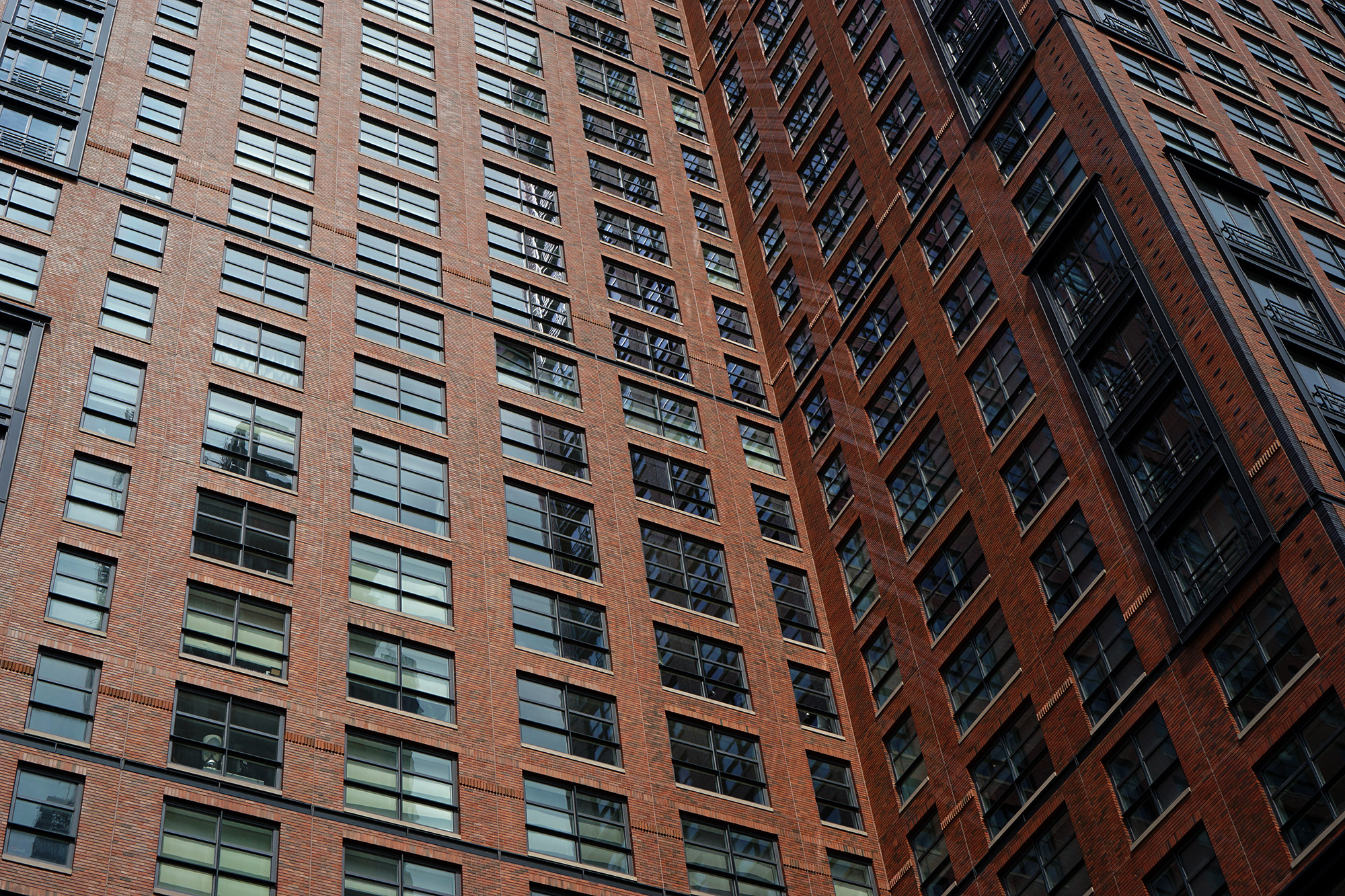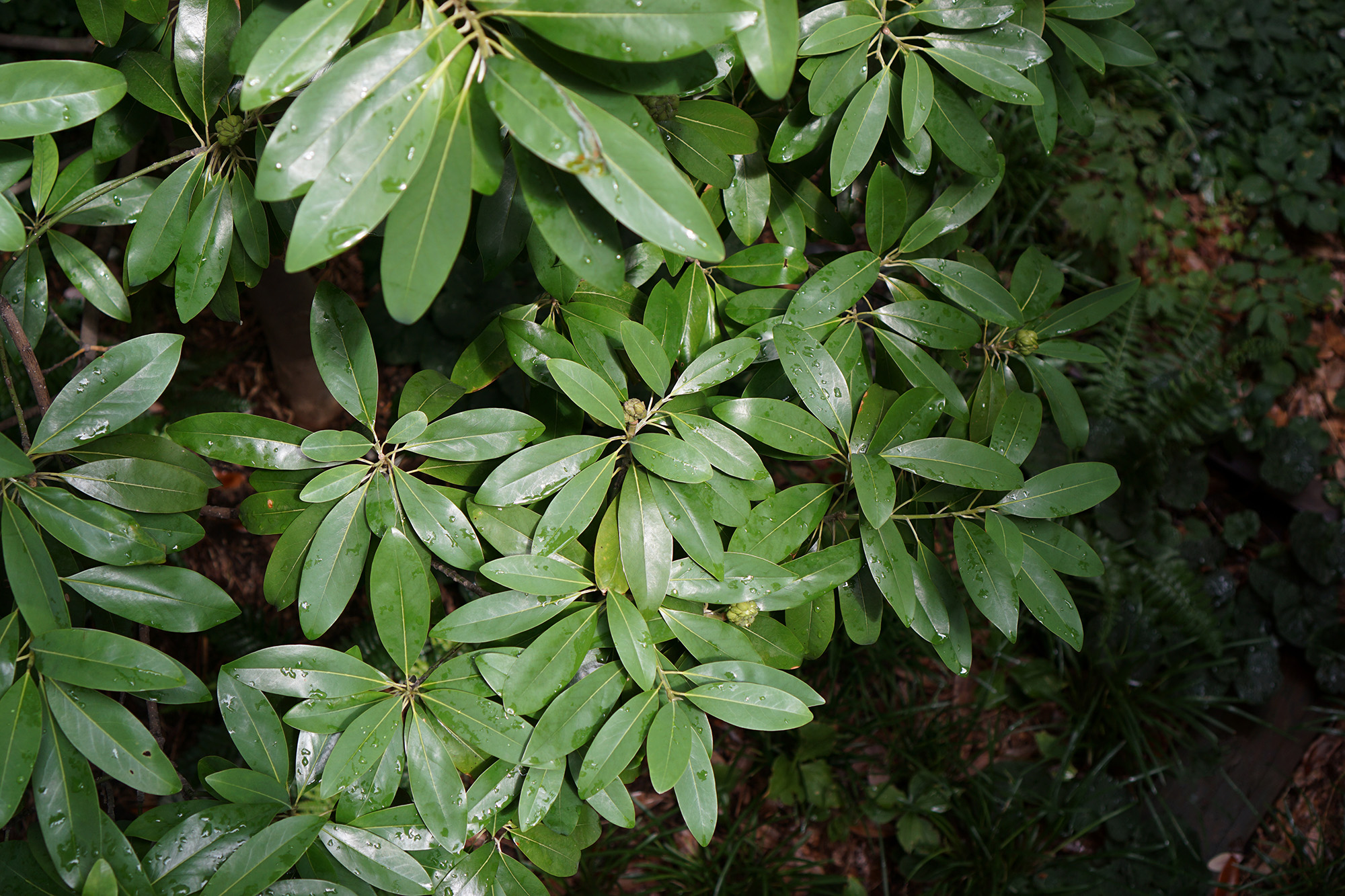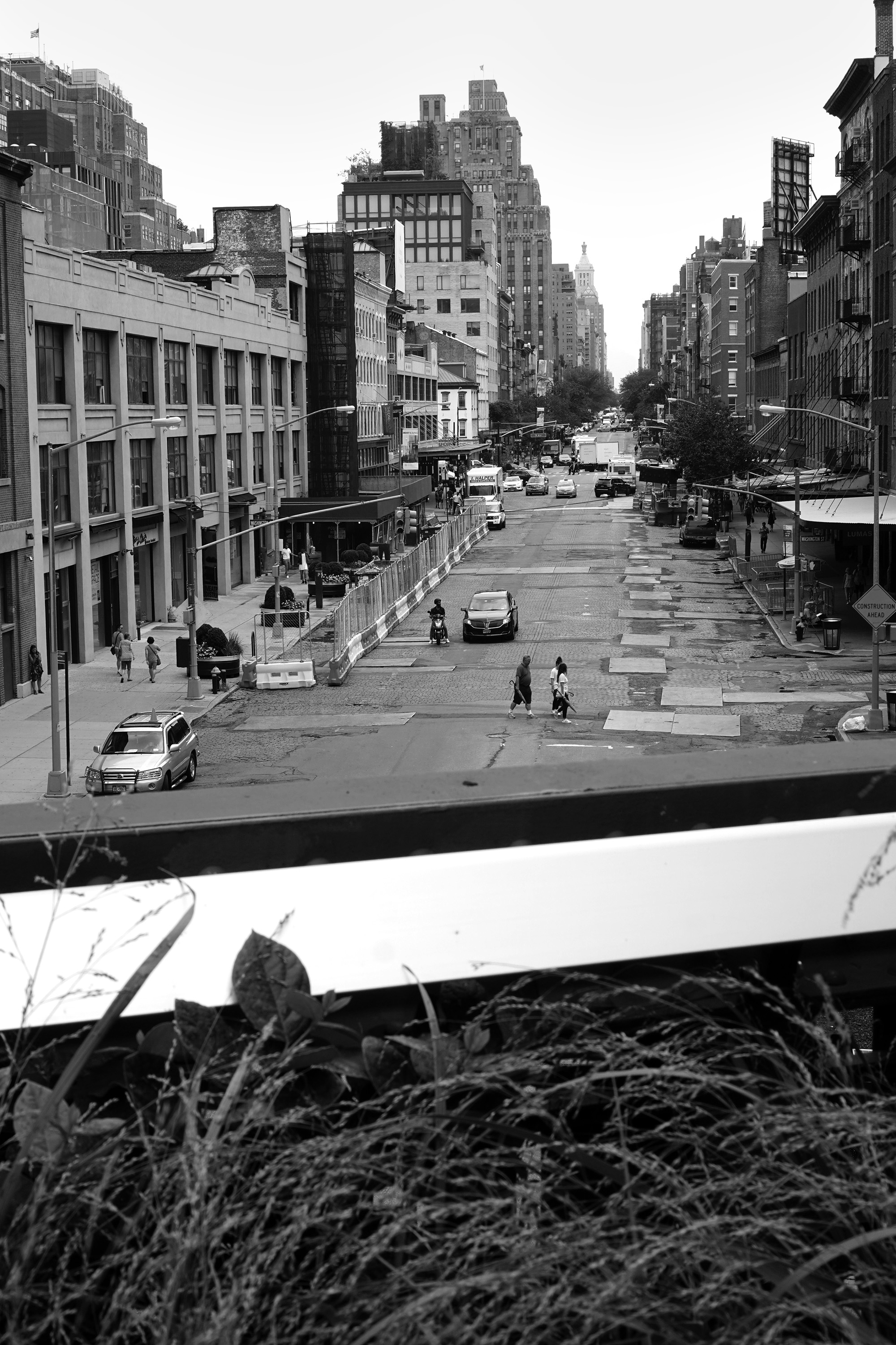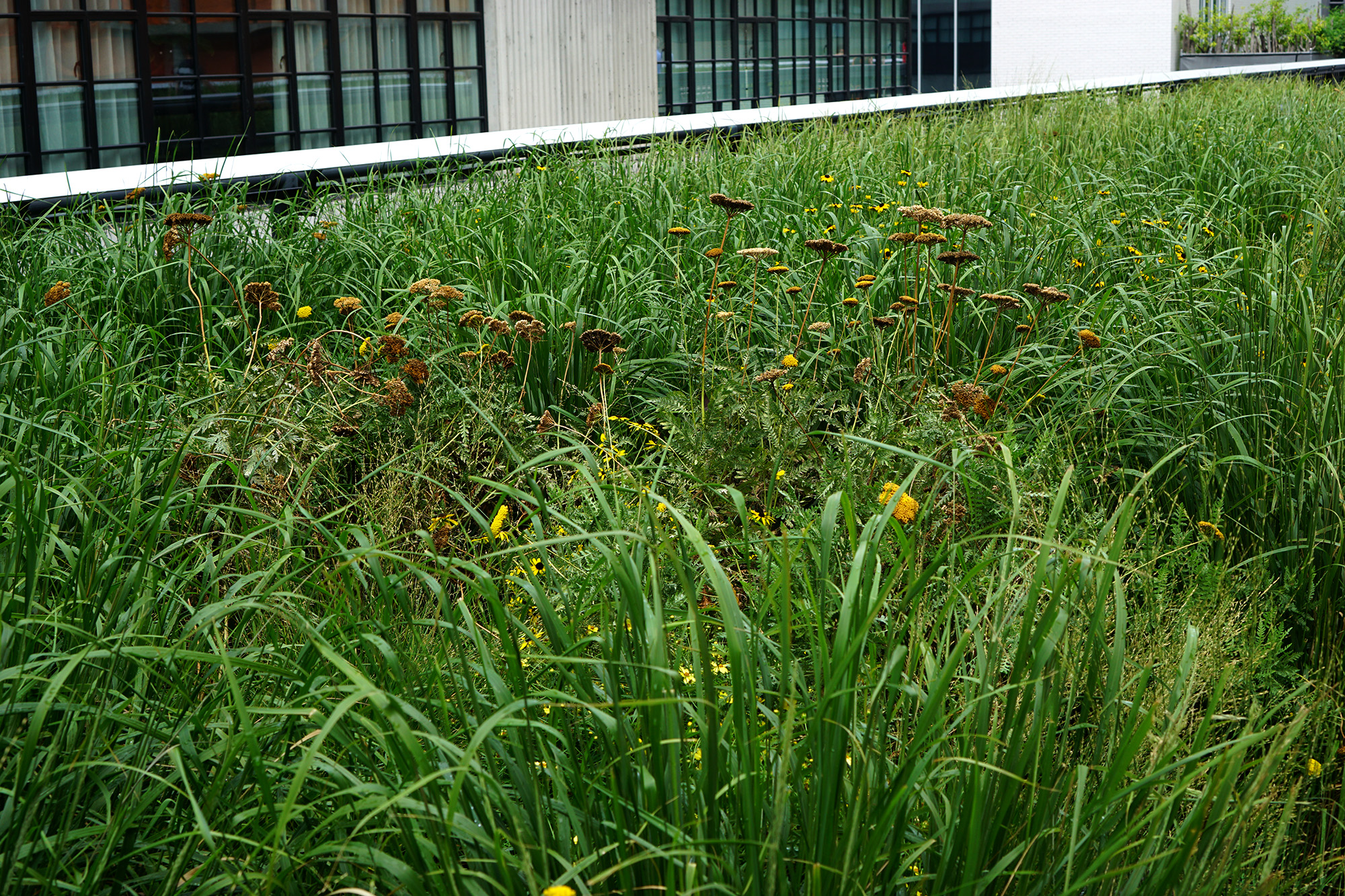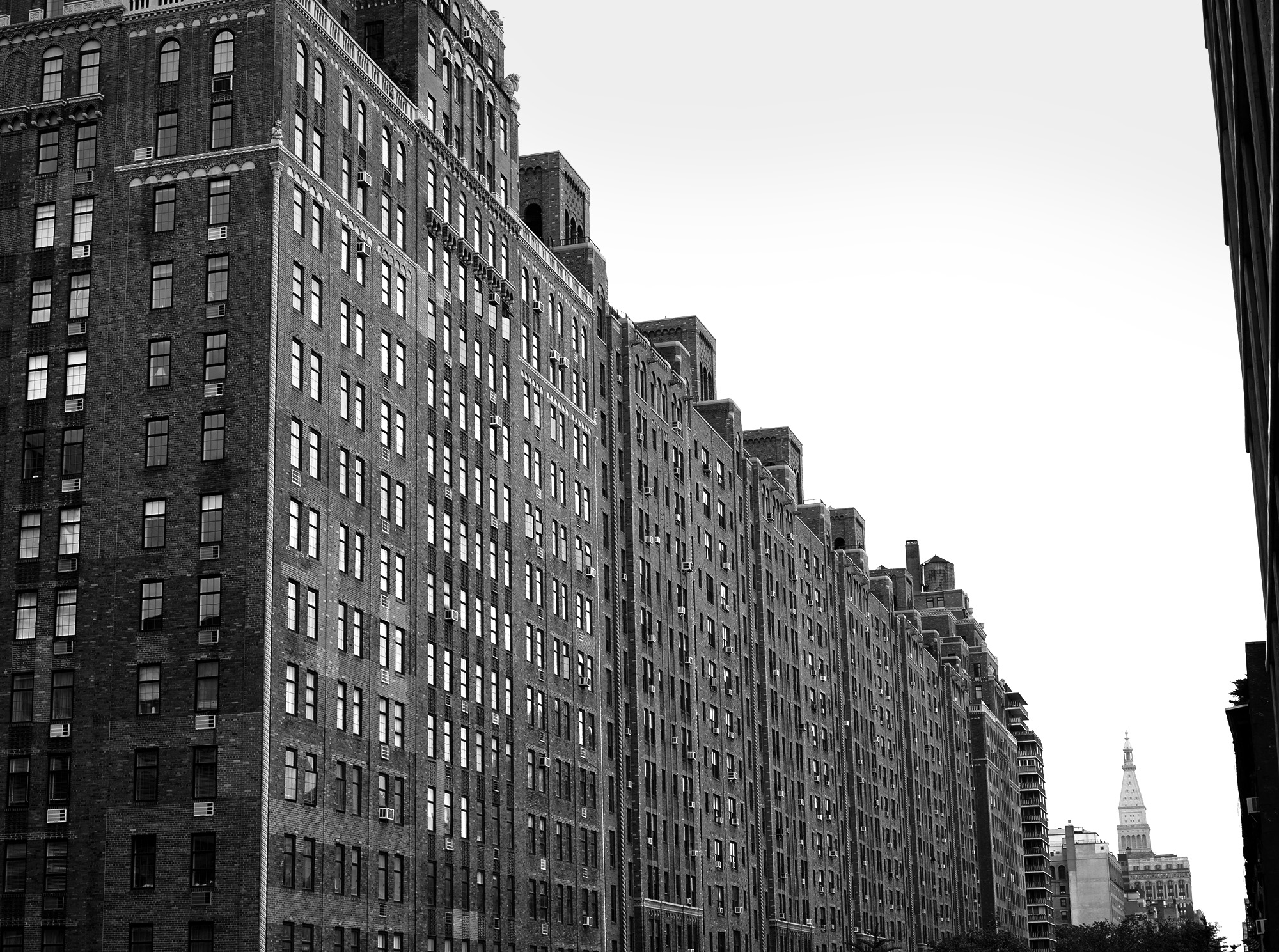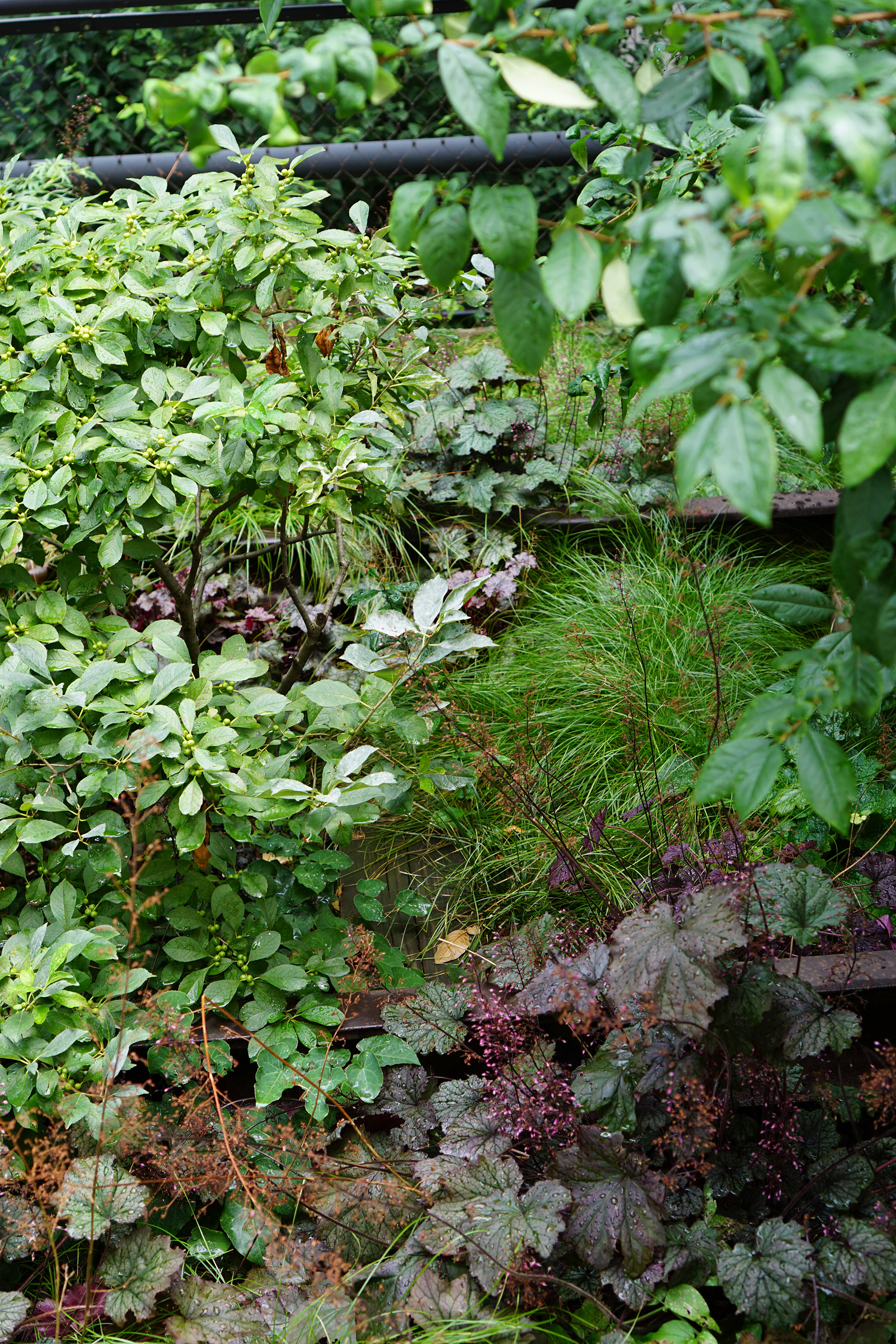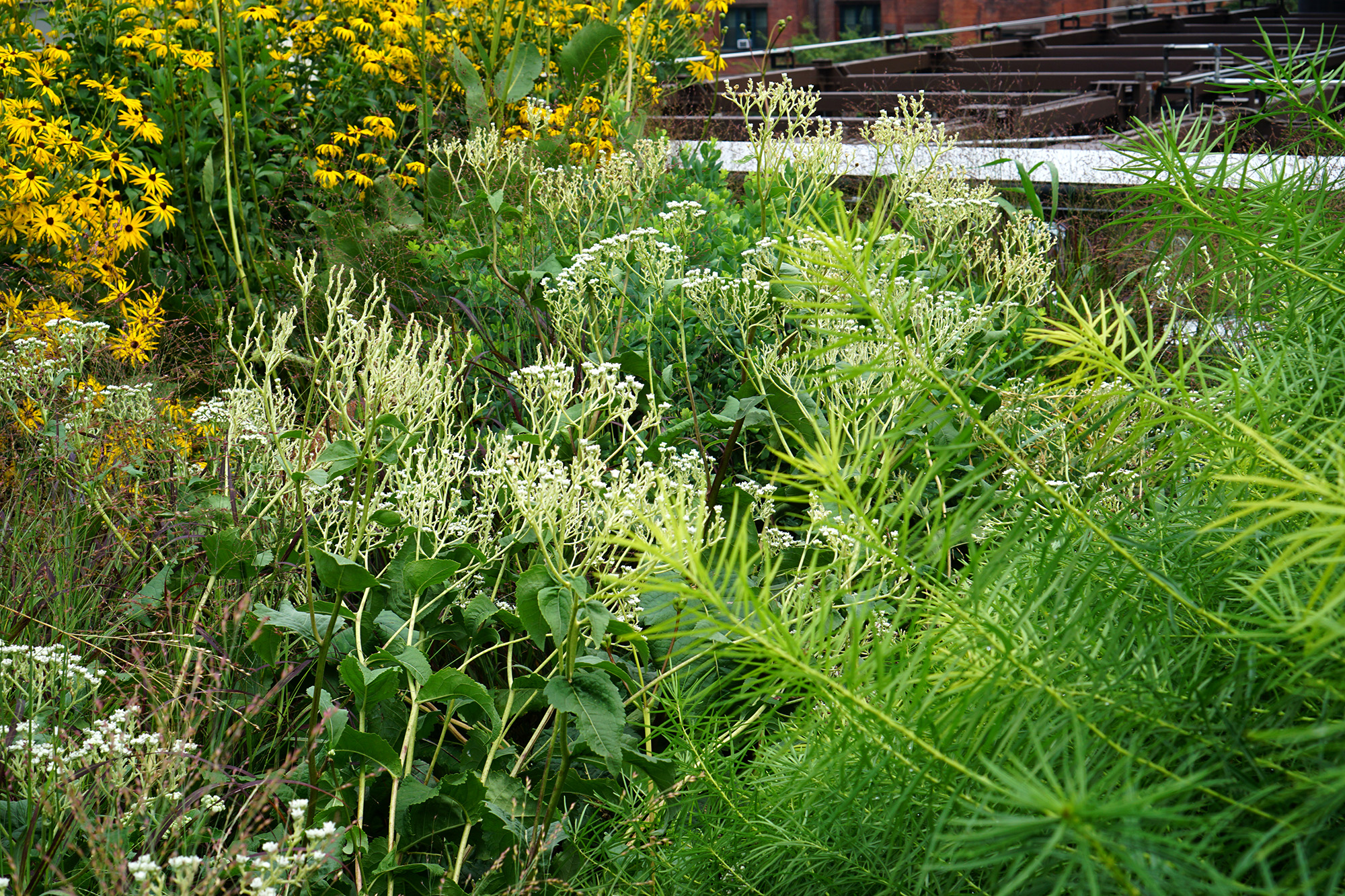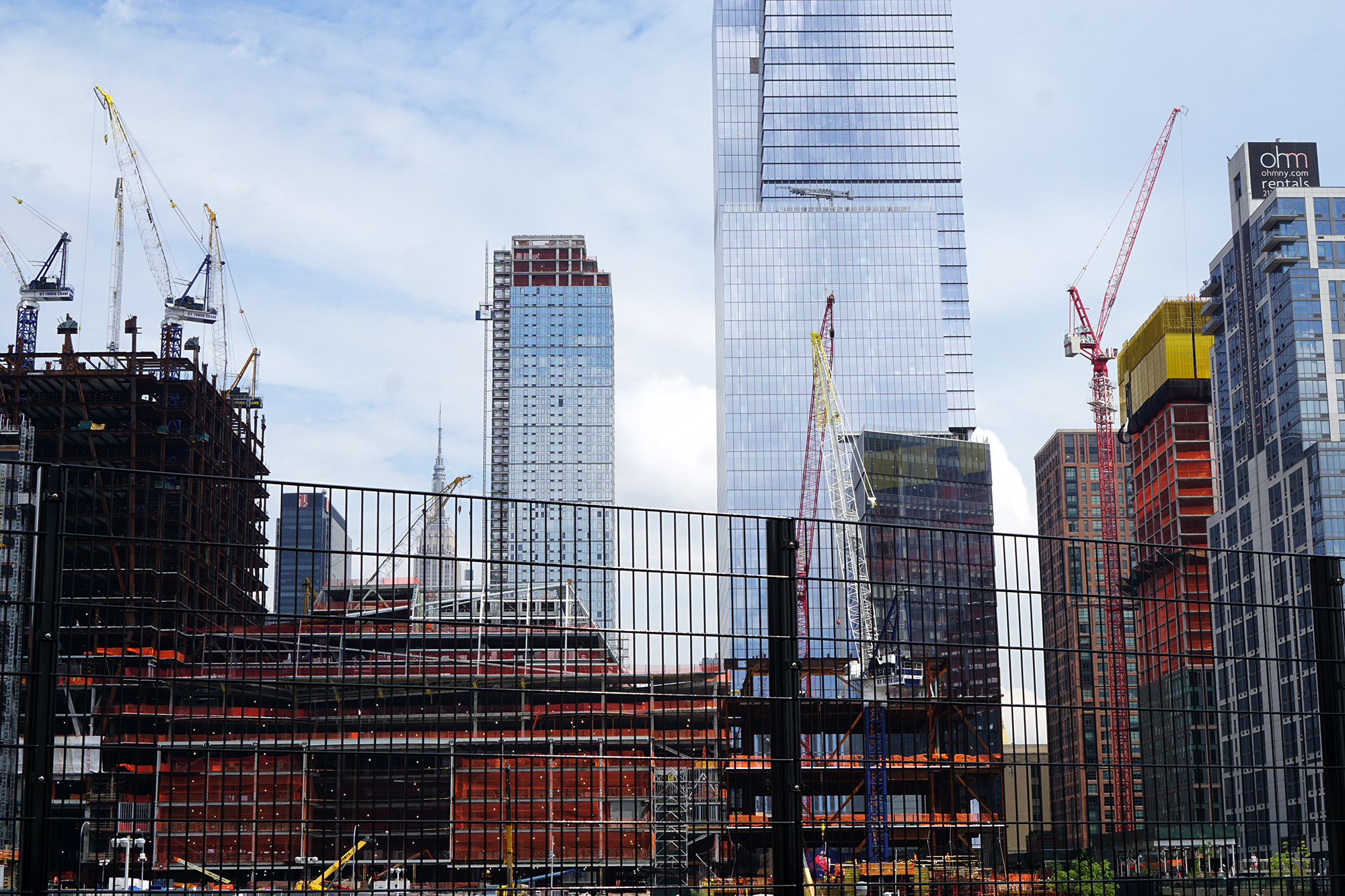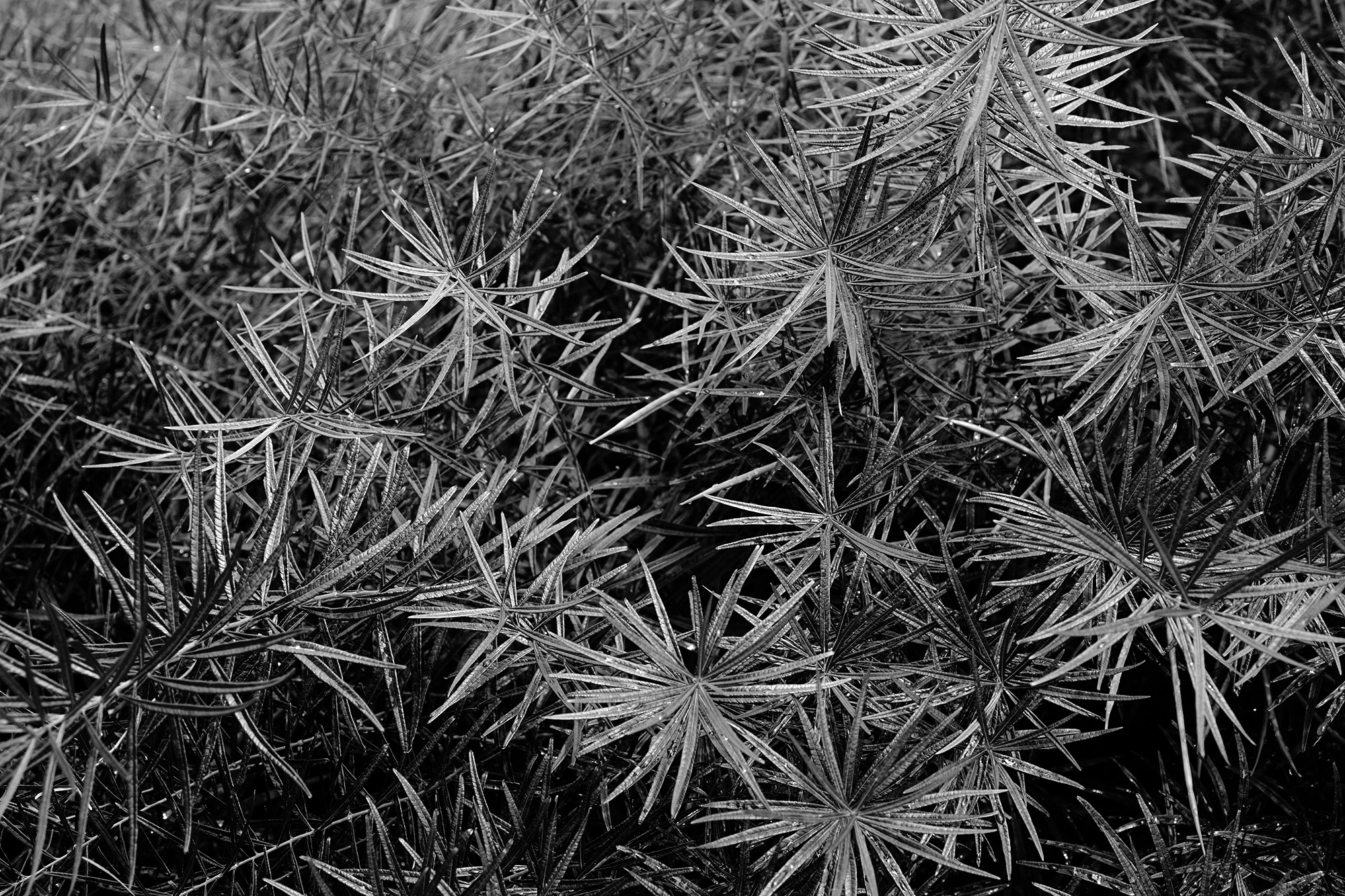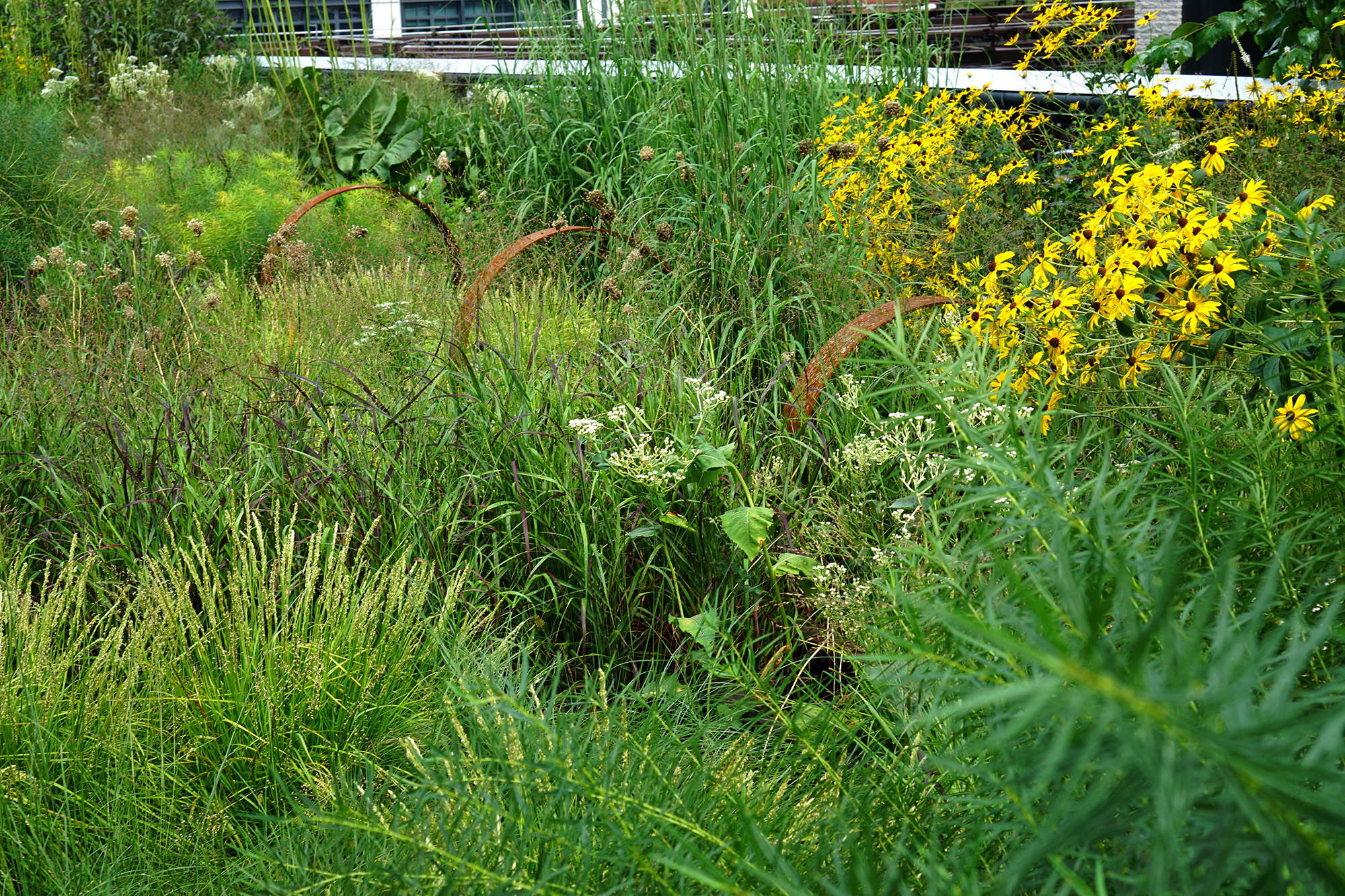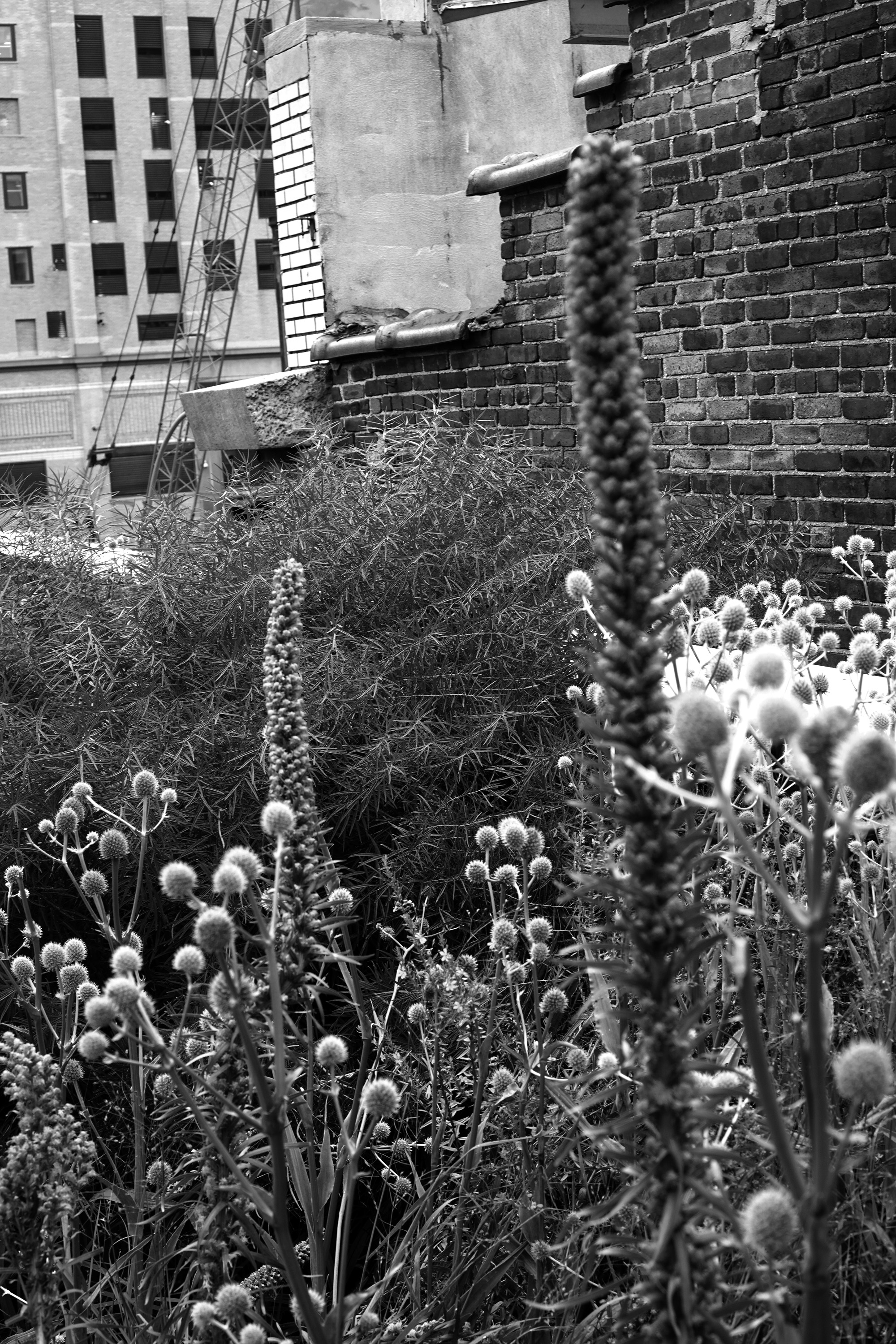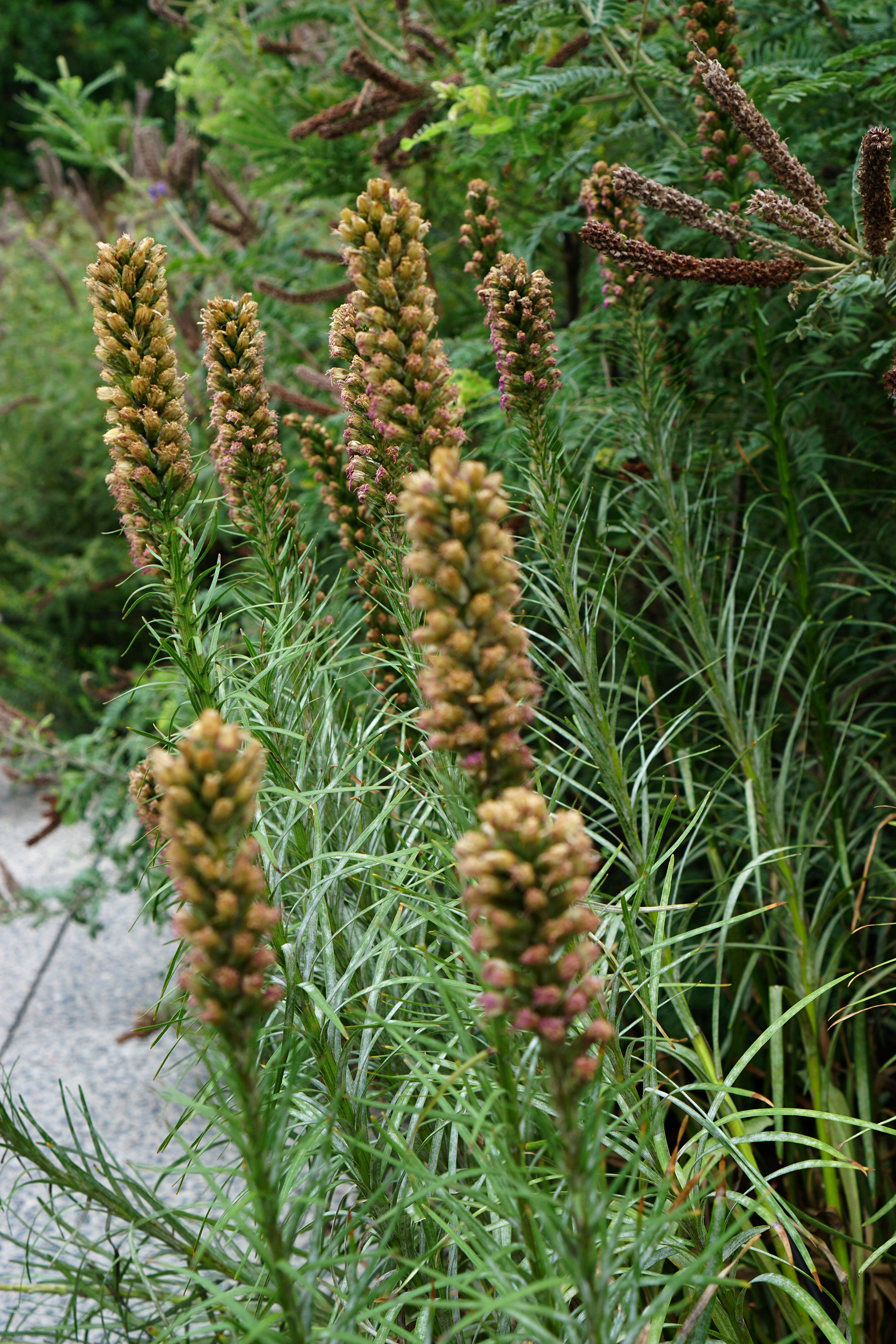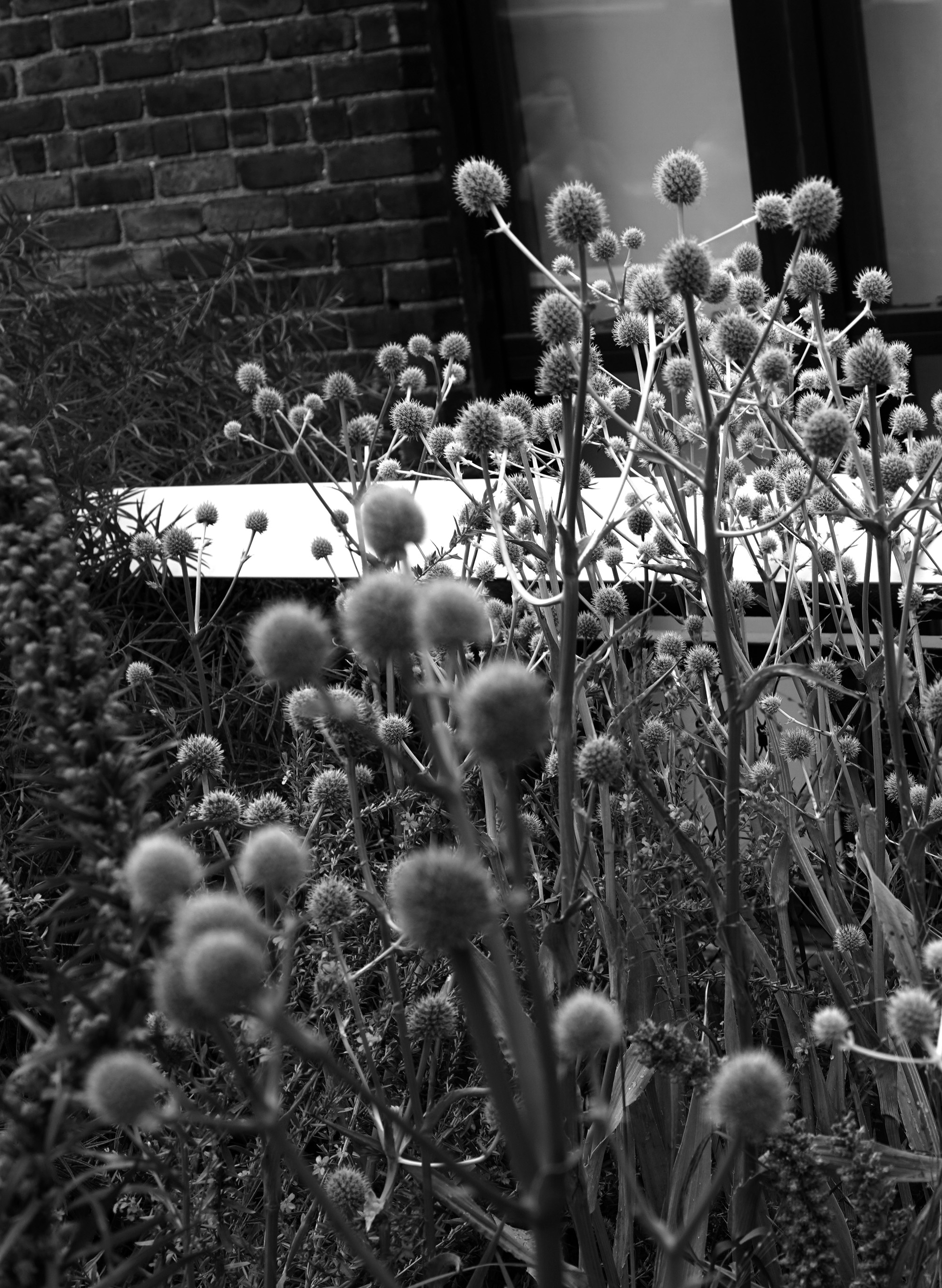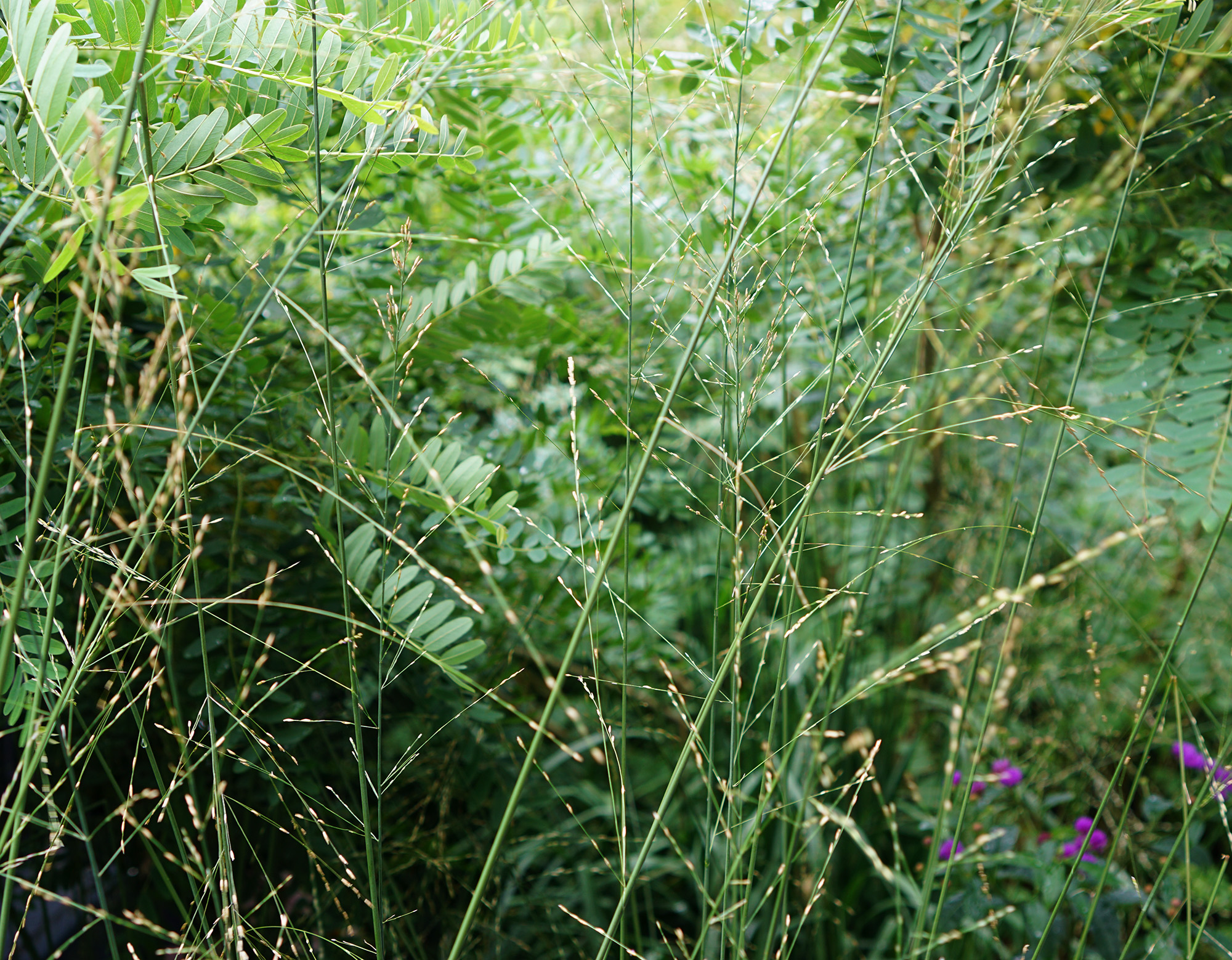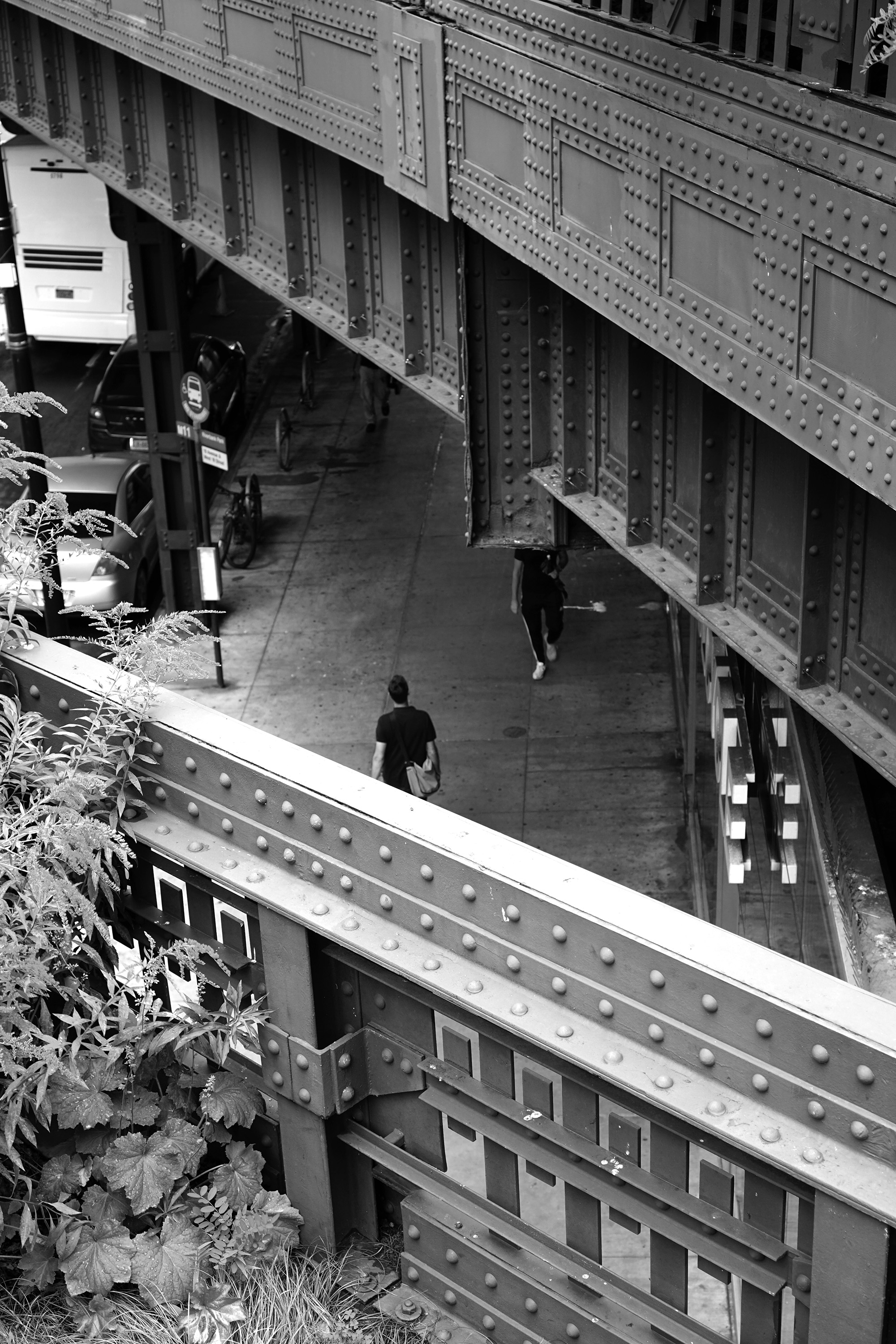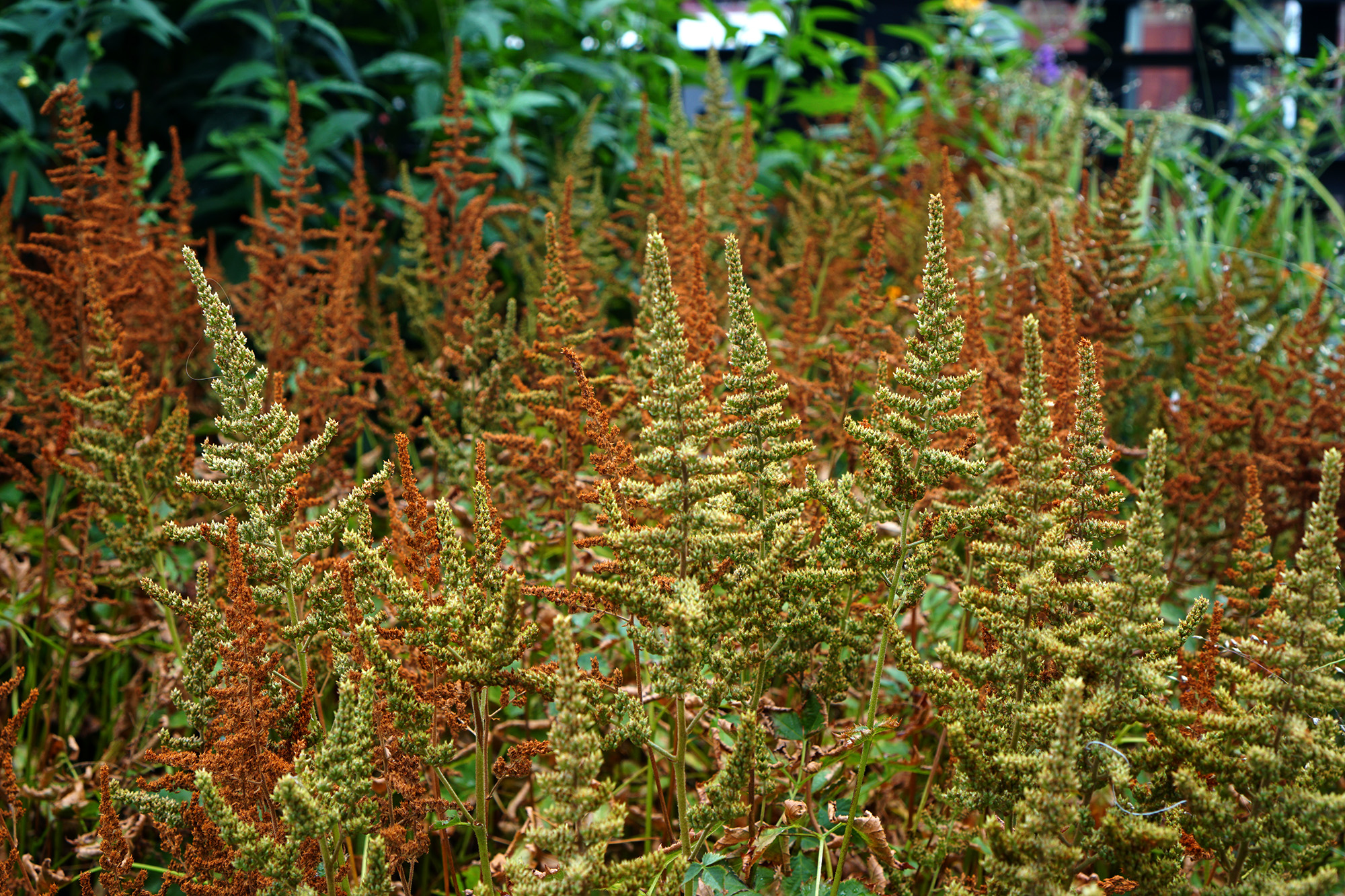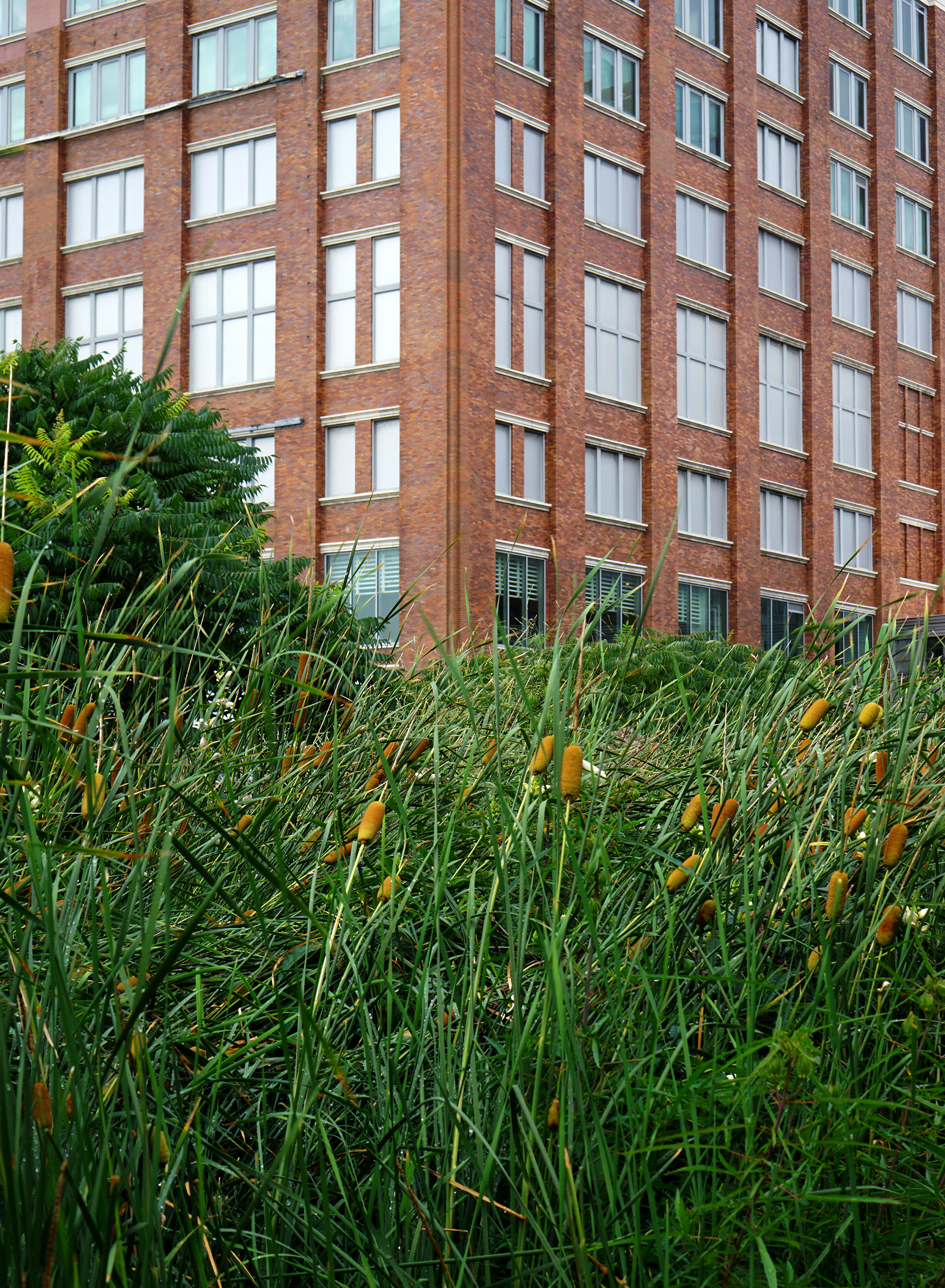The High Line
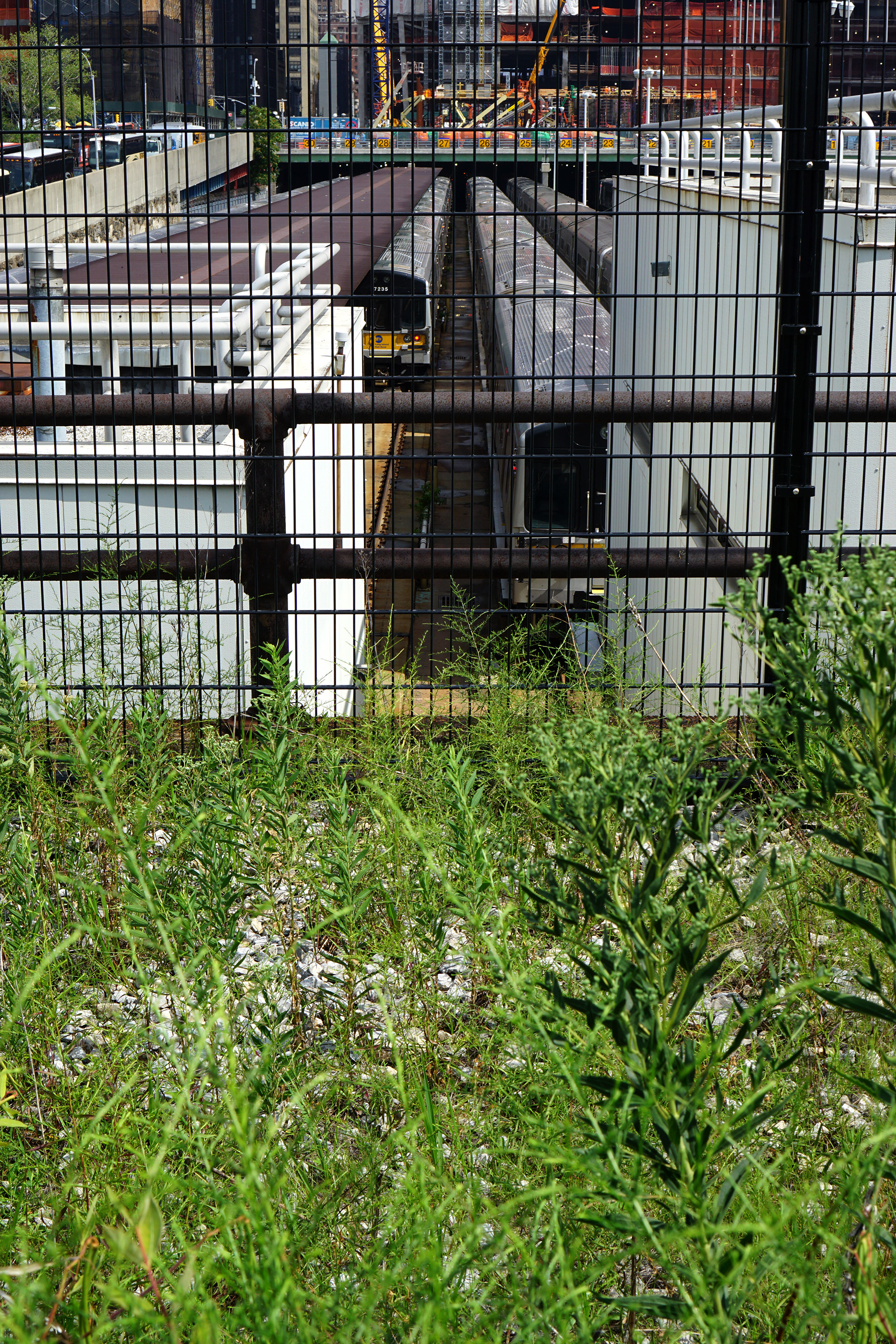
Gears grinding, steel catching high noon light in creaky crevices, hi-viz orange plastic cones and barriers peeking between branched brown and green grass. Wind rustling long reeds against each other, and workers yelling instruction from cherry pickers up overhead. Traffic running below, bumper to bumper beside the shore of the Hudson River. Airy patches of plantings fusing into a muddled base of patchwork color. And rising out of the shuffle of green: hard brick, poured concrete, glass and transom, brackets, beams, bolts, crumbled mortar, twisted wire fencing. Weather-worn train tracks encased in thick mud glint in the ground like exposed dinosaur bones.
The plants on the High Line are the same plants that grew on this old elevated train line soon after it began to wither into obsolescence. Their current orderly arrangement nods at human intervention, but the feeling remains: nature has taken this space back.
A walk along the Line puts you into a new loop of perception. A plant connects to a railing connects to the street and the buildings beyond. A tree points upward at the skyscraper hovering above. A shrub spreads, its triangular limbs directing your eyes toward the urban geometry around it. The sounds boomerang from wind in the leaves, to birds and people chirping, chattering, to the sudden boom of construction and giant metal claws grasping at endless asphalt.
There are no wheels allowed up here. Our slow, normal, human feet propel us down the snaking green path, forcing a reset of pace and adjustment in awareness: a welcome change against the rush and hustle of the city street below. Up here, you can see it all. You just have to slow down and look for it.
